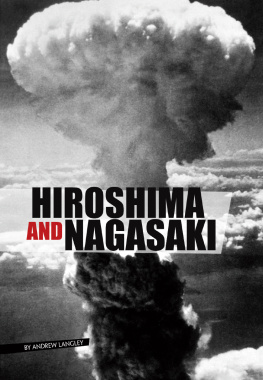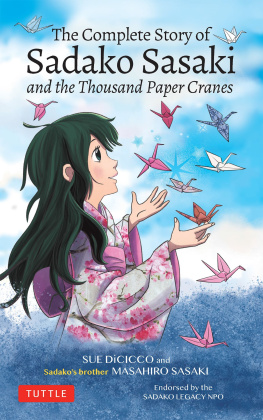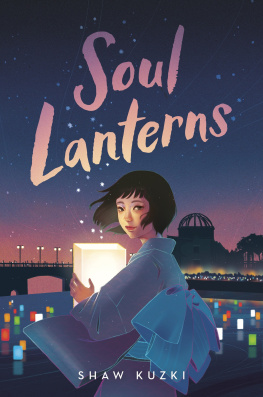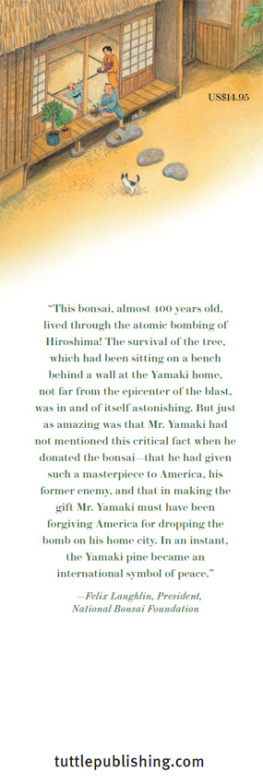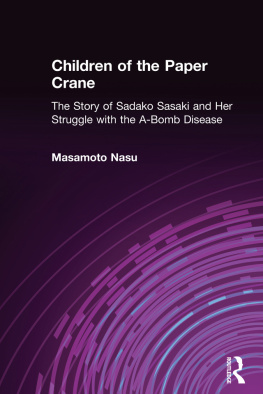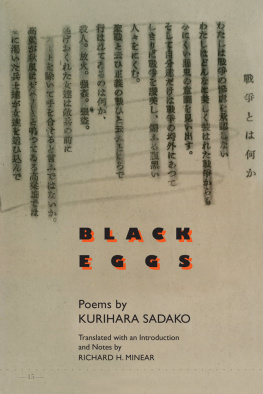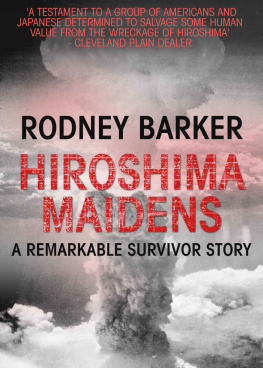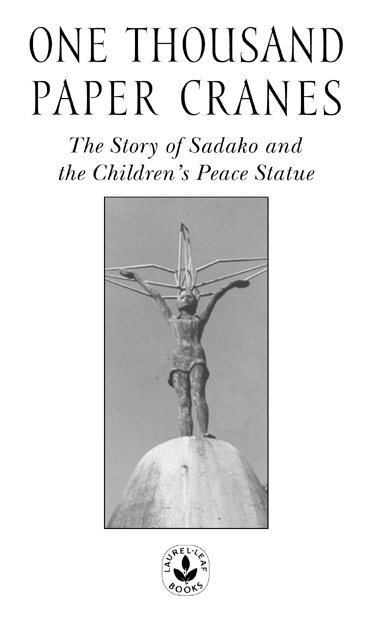ALSO AVAILABLE IN LAUREL-LEAF BOOKS:
ANNA OF BYZANTIUM , Tracy Barrett
HALINKA , Mirjam Pressler
SOLDIERS HEART , Gary Paulsen
SNAKE DREAMER , Priscilla Galloway
TIES THAT BIND, TIES THAT BREAK , Lensey Namioka
CHINESE CINDERELLA , Adeline Yen Mah
THE SPRING TONE , Kasumi Yumoto
BURNING UP , Caroline B. Cooney
CONDITIONS OF LOVE , Ruth Pennebaker
CLOSE TO A KILLER , Marsha Qualey
Published by
Dell Laurel-Leaf
an imprint of
Random House Childrens Books
a division of Random House, Inc.
1540 Broadway
New York, New York 10036
Photographs contributed by Takayuki Ishii, Ichiro Kawamoto, Masahiro Sasaki, Kiyo Ohkura, Marie Bogart, and the Hiroshima Peace Memorial Museum
Illustrations by Sarah Carlson
Copyright 1997 by Takayuki Ishi
All rights reserved. No part of this book may be reproduced or transmitted in any form or by any means, electronic or mechanical, including photocopying, recording, or by any information storage and retrieval system, without the written permission of the Publisher, except where permitted by law. For information address Yohan Publications, Inc., 14-9, Okubo 3-chrome, Shinjuku-ku, Tokyo, Japan.
The trademark Laurel-Leaf Library is registered in the U.S. Patent and Trademark Office.
The Trademark Dell is registered in the U.S. Patent and Trademark Office.
Visit us on the Web! www.randomhouse.com/teens
Educators and librarians, for a variety of teaching tools, visit us
at www.randomhouse.com/teachers
eISBN: 978-0-307-80634-5
RL: 6.0
Reprinted by arrangement with Yohan Publications, Inc.
v3.1
Contents
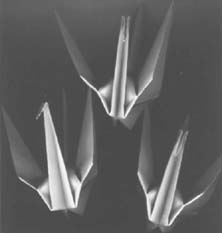
In Japan the crane is a traditional sign of long life and good fortune. According to the folk tale, if one crane represented a thousand years of happiness, then a thousand cranes would mean one million years of happiness.
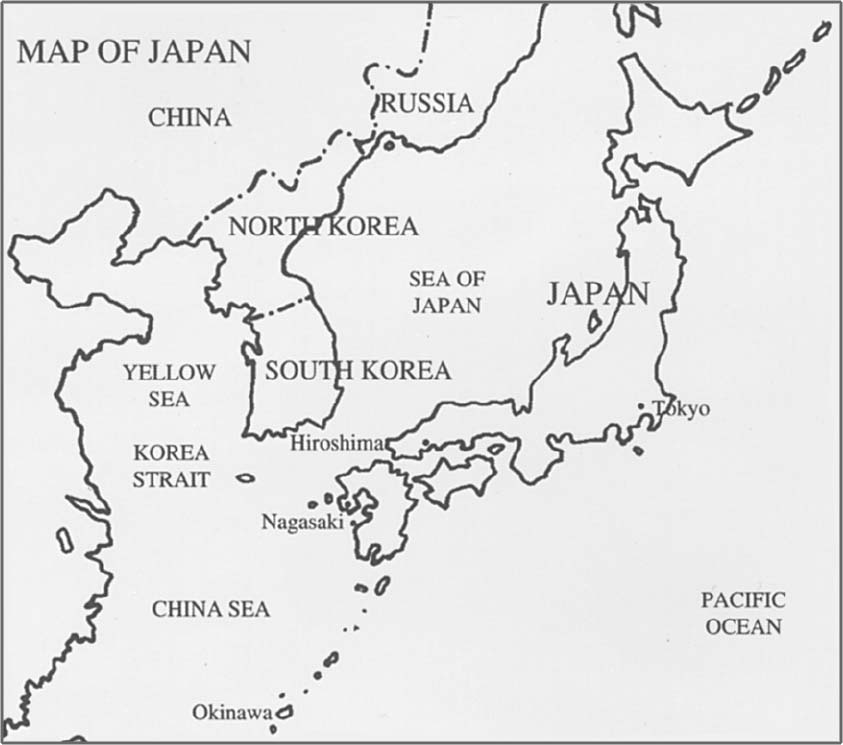
Introduction
One day in the fall of 1991 my son Scott, then a fifth grader, came home from school, quite excited, and asked me if I had ever heard about the story of Sadako. At first, I didnt recall it because in Japan, Sadako was known as the girl who folded paper cranes, and not by her first name. As my son explained the story to me, I recognized it. Coincidentally, my family and I were planning to visit Japan the following spring. Scott pleaded with me to take him to Hiroshima so he could see Sadakos statue. This was the beginning of a journey which would end with my writing this book.
When we returned from our visit to Hiroshima in April 1992, I read several books about Sadako, in addition to numerous other books on Hiroshima and Nagasaki. When I had finished reading all the available material I could find on Sadako, I decided to write a fact-based book on Sadako for the children of America and other English-speaking children of the world.
My decision to write this particular book was primarily because of my interest in children. Children represent our future, and I believe that children and youth are a vital part of our present society. Young and old, we all must work together for a better society.
In discussing the horrors of the atomic bombs that were dropped on Hiroshima and Nagasaki, people frequently say, Lets not forget Pearl Harbor! They are rightwe must remember Pearl Harbor, but we must also remember Hiroshima, Nagasaki, the Holocaust, all the horrors of World War II, the Korean War, the My Lai Massacre in Vietnam, and all the other atrocities of wars throughout history. The real issue as I see it is not who or which country committed what crime, but why! Every war invariably results in terrible tragedies, immense waste and sinful destruction. All wars, no matter how big or small, how nearby or far away, diminish our humanity to a barbaric level.
Why Sadakos story? Because the story of Sadako goes beyond the issue of world peace and beyond the horror of the atomic bomb. It is a story well worth telling and, hopefully, well worth reading. Even a brief familiarity with this courageous young girl will reveal a person of exceptional character. Those who knew her soon discovered that she was a uniquely gifted child, able to confront adversity gracefully and be strong against the many hardships she had to endure. It can be safely assumed that a person of less courage, subjected to a similar ordeal, would not have survived as long and bravely as she did.
But we must keep in mind another important aspect of this poignant story. From the very beginning, Sadakos painful and prolonged burden was lightened appreciably by the unwavering support she received from her devoted family, friends, and teacher. In their supportive roles, they all played heroic parts. And finally, who among us would not be uplifted to learn about a small group of young students who miraculously and almost single-handedly turned a beautiful dream into an awe-inspiring reality?
In my effort to write a fact-based book, I realized that it would be highly advantageous if I could see for myself where and how the story began. This could only be successfully achieved if I had firsthand knowledge of the facts, most of which could only be obtained in Japan the home of Sadako Sasaki!
In 1993 and in 1996, I revisited Hiroshima and Nagasaki. From the first day of my visit I felt overwhelmed by the hospitality and cooperation that was extended to me by every member of the Sasaki family, which includes Sadakos father and mother, her older brother Masahiro, his wife Yaeko, and their daughter Tomoyo. I met Eiji, Sadakos younger brother, at the cemetery. I never did get to meet Sadakos younger sister Mitue, because she lived a distance away from her family, in Fukuoka. During my first visit with the Sasakis, I frequently walked, talked, and dined with them. They showed me many photographs of Sadako and gave me a number of paper cranes which Sadako had actually folded during her stay in the hospital.
Sometime later, we went to visit the family grave where Sadakos remains are buried. Even before my visit came to an end, I felt as though these lovely people were now a part of my extended family.
I also met Kiyo Ohkura, who had been Sadakos roommate at the hospital. She gave me very valuable personal information about Sadako, which was previously not known to the public. Ms. Ohkura is now a high school librarian in Tokyo.
I also had the good fortune to meet with Mr. Ichiro Kawamoto, who played a major role in helping to build the Childrens Peace Statue, Genbaku-no-Ko-no-Zoh (the Statue for the Children of the Atomic Bomb). He is now retired from his job as custodian in the Hiroshima Jogakuin Junior and Senior High School for Girls. To this very day, along with a small group from the Hiroshima Paper Cranes Association, he takes care of the Childrens Peace Statue and makes certain that it always looks its best. Mr. Kawamoto also cares for the monument that honors the many Koreans who were victims of the atomic bomb. At the time of the bombing, a great number of Koreans were in Hiroshima as forced laborers. Many of them died.


